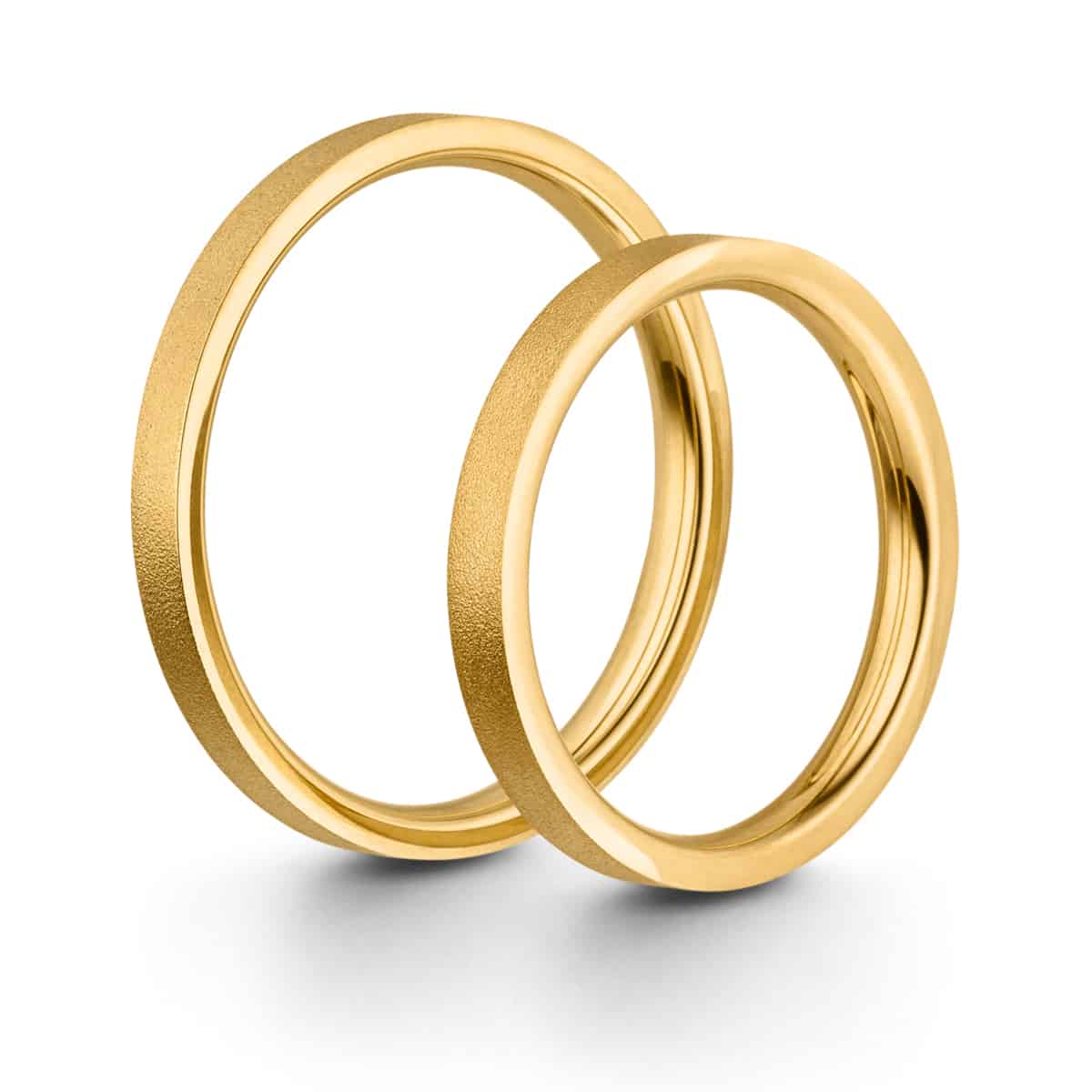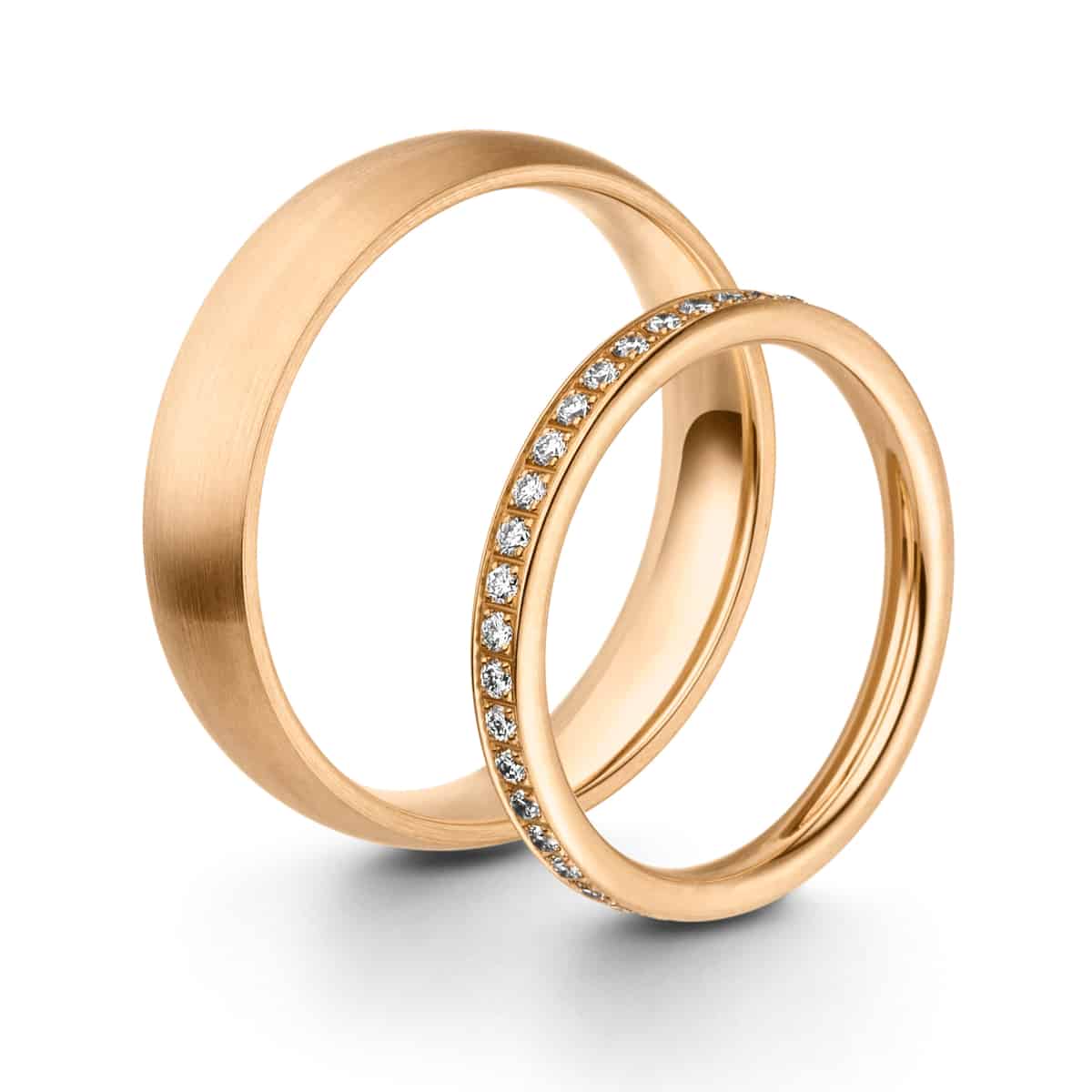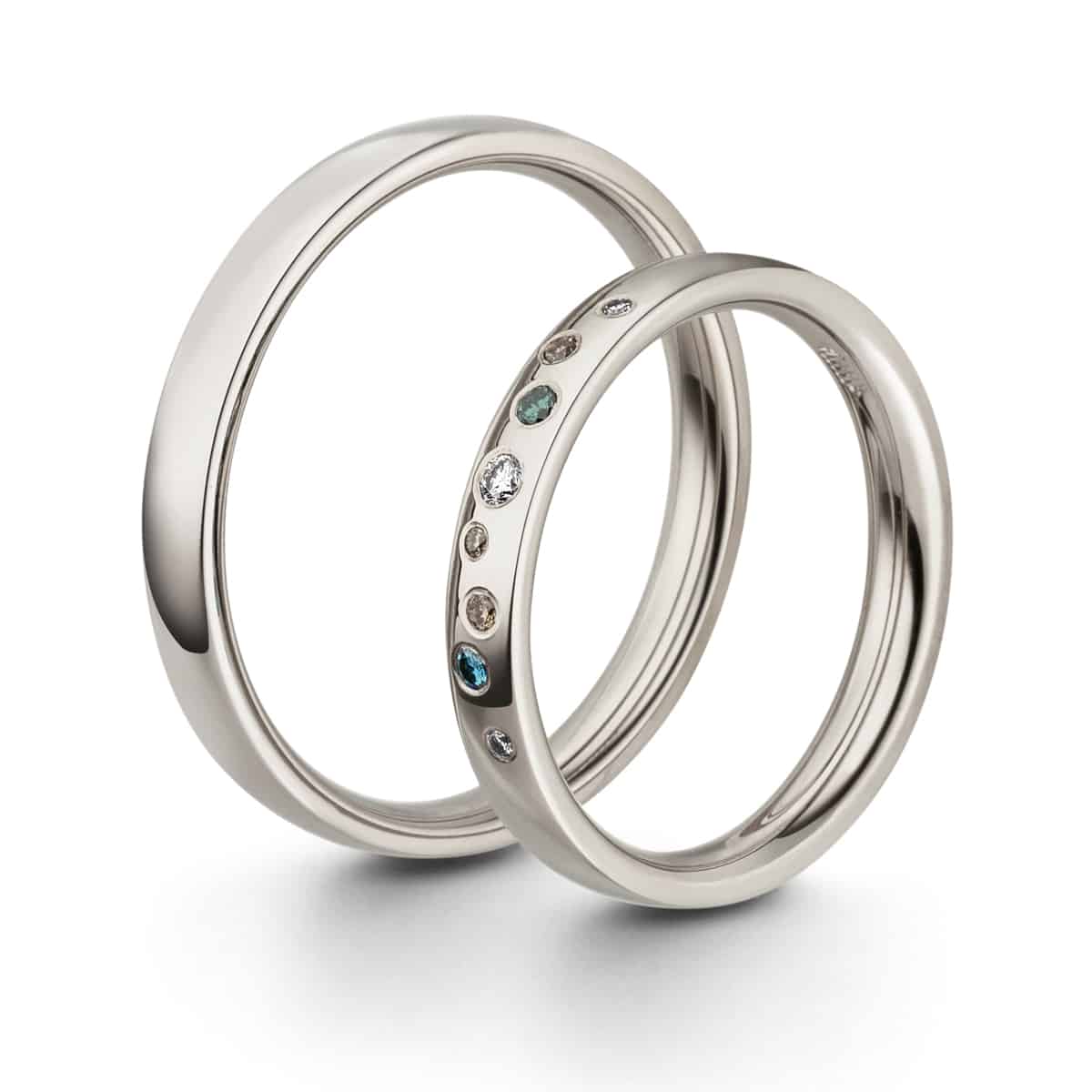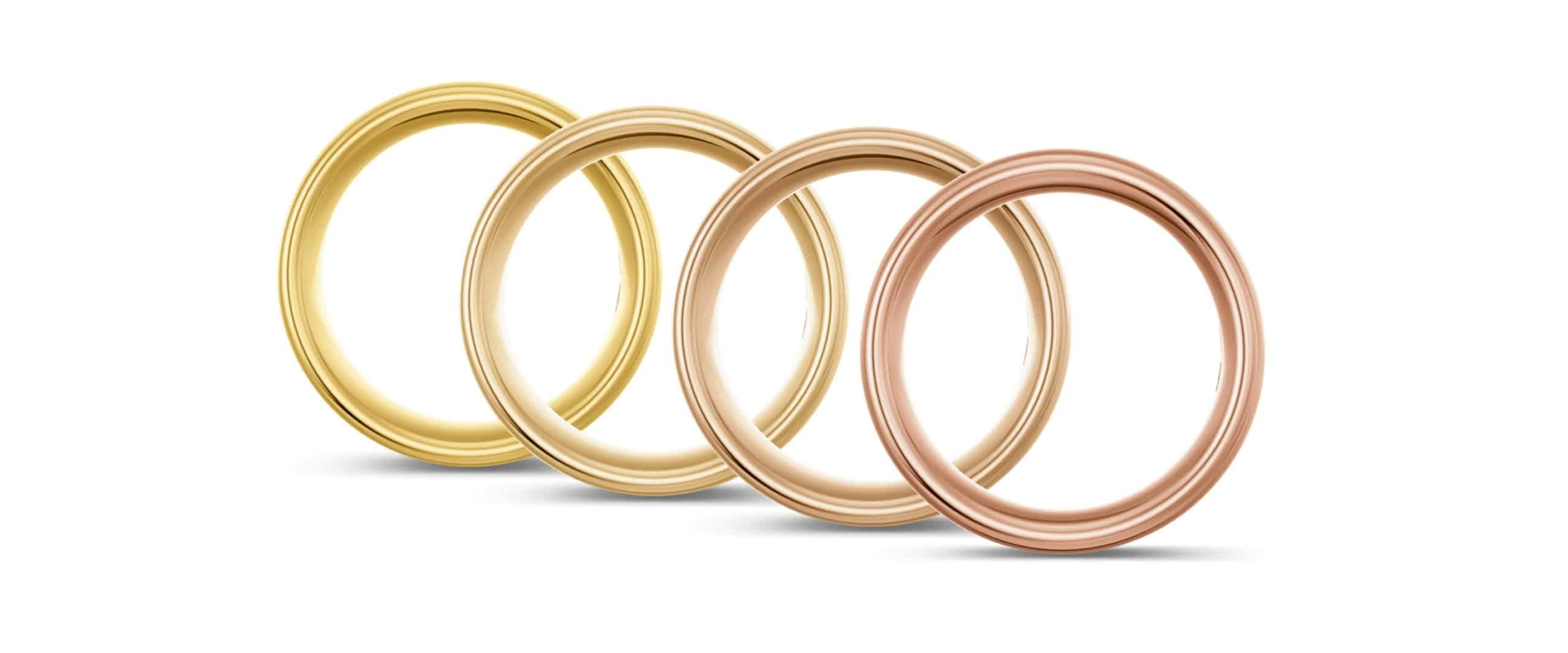
What do we understand by alloys and how are the precious metal colors created?
Precious metals are metals that are corrosion-resistant, i.e. that are permanently chemically stable in a natural environment when exposed to air and water. Because of this stability, gold and silver have been used to make jewelry and coins since ancient times. In the last four centuries, the platinum group metals were also discovered, which are similarly resistant to corrosion as gold. These are also noble metals, have high densities and similar chemical properties.
The term “alloy” comes from Latin and describes the joining or melting together of different metals or metals with non-metals. The color and quality of the precious metal are determined by the type of precious metal and the precious metal content. Pure gold (Latin Aurum; chemical symbol AU) is called fine gold. In its pure form it is free of other metals such as silver and copper. Fine gold has a light yellow color, which does not change in the air because it does not combine with the oxygen in the air. This particular property classifies gold as a precious metal.
In its pure form, gold is the most ductile and softest metal. For this reason, it is alloyed with other metals before processing. These alloys are of decisive advantage in jewelry and especially in wedding ring production, because they often have different, more durable physical properties than metals in their pure form. Wedding rings can often be made harder and more resistant, and each alloy gives the ring its unique shimmer of color. With the addition of silver or palladium, the original yellow shimmering color of the gold manufacturer becomes darker or reddish with the addition of copper.
The degree of purity of gold can be expressed in different ways. A common measure in the 19th century was – and in some cases still is today, especially in the United Kingdom and the USA – the “carat”. The number of carats (kt) refers to how many parts of 24 total parts of an alloy are pure gold (e.g. 24kt gold means that 24 of 24 parts are gold, i.e. 24kt denotes 100% pure gold). The 8kt, 14kt, 18kt and 21kt containers we use contain 33.3%, 58.5%, 75% or 90% gold, respectively. In Europe today, the indication that the proportion is based on 1000 parts by weight is more popular. This means that in alloy 585 a total of 585 out of 1000 parts by weight consist of fine gold. With a hallmark (embossing) in each of the rings, the actual fineness is guaranteed.
The origin of our gold: 100% recycling
Back in 2009 we asked ourselves how we could offer our gold products without further fueling the harmful process of gold mining, in order to take responsibility for ourselves and our planet. The solution was to completely switch to using recycled gold. Gold, which moves in a constant cycle in the cities and is therefore already “stored” there in considerable quantities. Gold, which by its already existence no longer creates new incentives for harmful mining.
The fact is: there is already enough gold!
Instead of buying from large primary sources, since 2009 we have been sourcing our gold 100% from trustworthy, long-standing suppliers in northern Germany, for whom we sometimes even carry out the recycling process ourselves in Hamburg-Eimsbüttel. This gives us direct control over what we process into rings in the next subsequent steps. All of our partners are also RJC-certified (Responsible Jewelery Council) and are therefore part of an association of companies that are committed to responsible corporate practice along the entire supply chain and comply with the high legal standards for gold purchasing in Germany.
With the gold products from amodoro you can appreciate what gold was originally about: imperishable beauty.
Warm Colors
The most popular jewelry alloy: A classic
Yellow Gold
Yellow gold is still the classic and the most popular jewelry alloy worldwide. It has a golden-yellow shimmer and is a combination of fine gold, silver, zinc and copper. The color depends on the proportion of gold used. Thus, the higher the gold content, the more intense the yellow-shimmering gold tone. We offer you the following yellow gold alloys to choose from: 333 yellow gold (8 carats), 585 yellow gold (14 carats), 750 yellow gold (18 carats), 900 yellow gold (21.6 carats).
Design yellow gold rings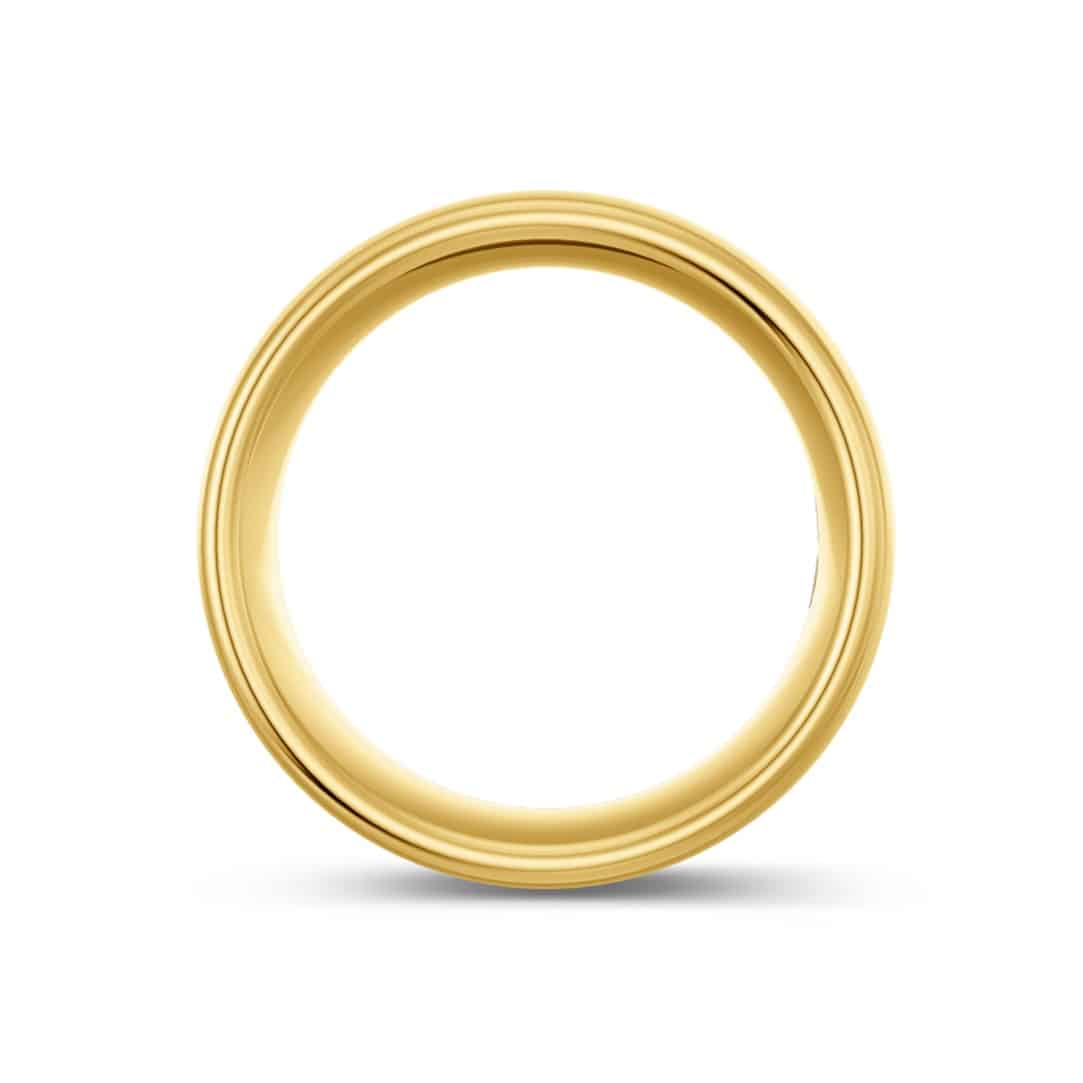
Particularly soft, warm shimmer
Rose Gold
This alloy impresses with a particularly delicate, reddish color compared to our yellow. In some cases it even almost resembles the color of human skin. However, our rose gold is a very delicate rose, which can also be interpreted as a rich, warm yellow tone, depending on the incidence of light. We offer you the following variations to choose from: 585 rose gold (14 carat), 750 rose gold (18 carat).
Design rosé rings now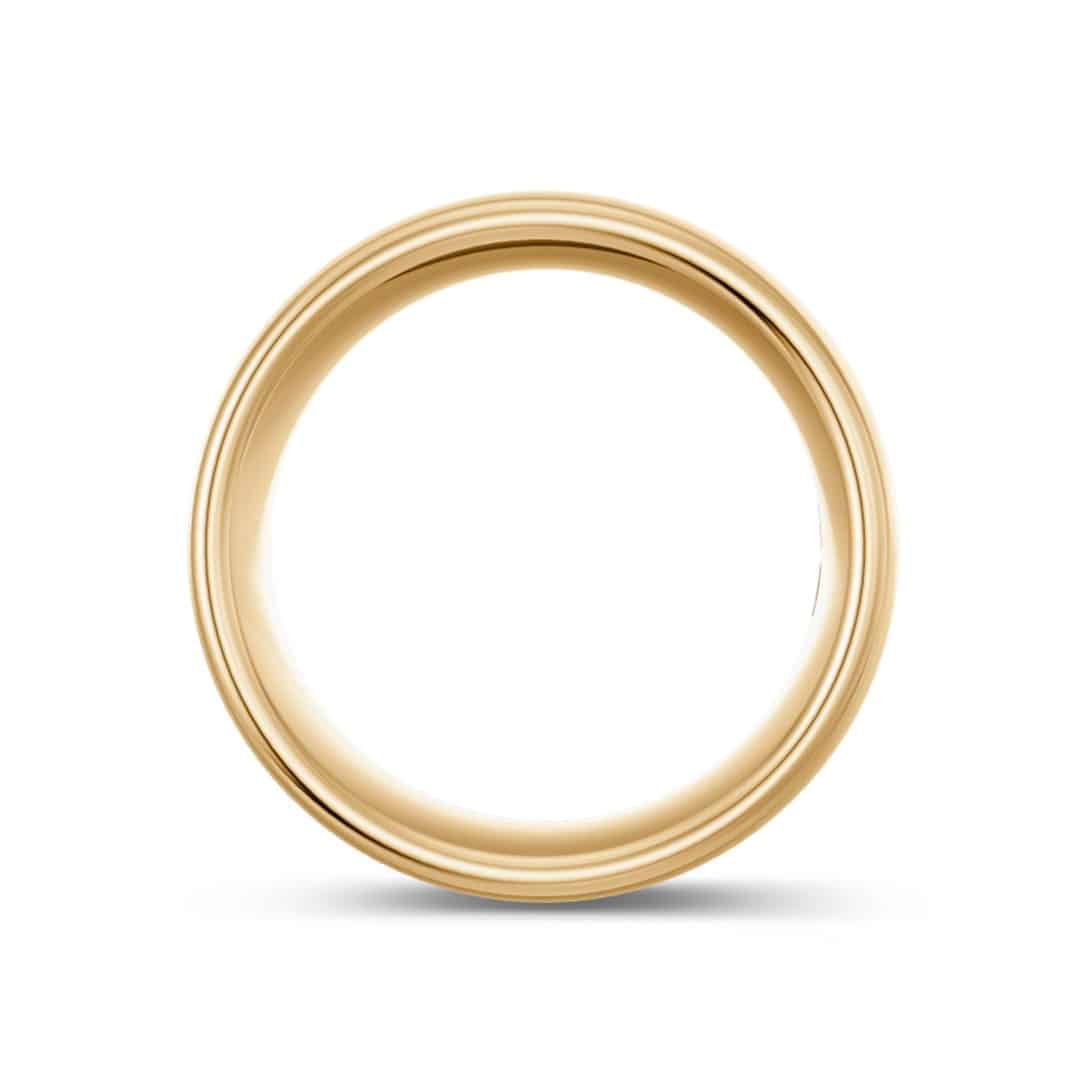
The slightly redder rose tone
Apricot Gold
Our apricot shimmers a little more intensely than our rose gold. It has a slightly lower percentage of silver and a higher percentage of copper, giving it its characteristic softer rosé luster, similar to a ripe apricot. You can choose from the following alloys: 585 apricot (14 carat), 750 apricot (18 carat)
Design apricot rings now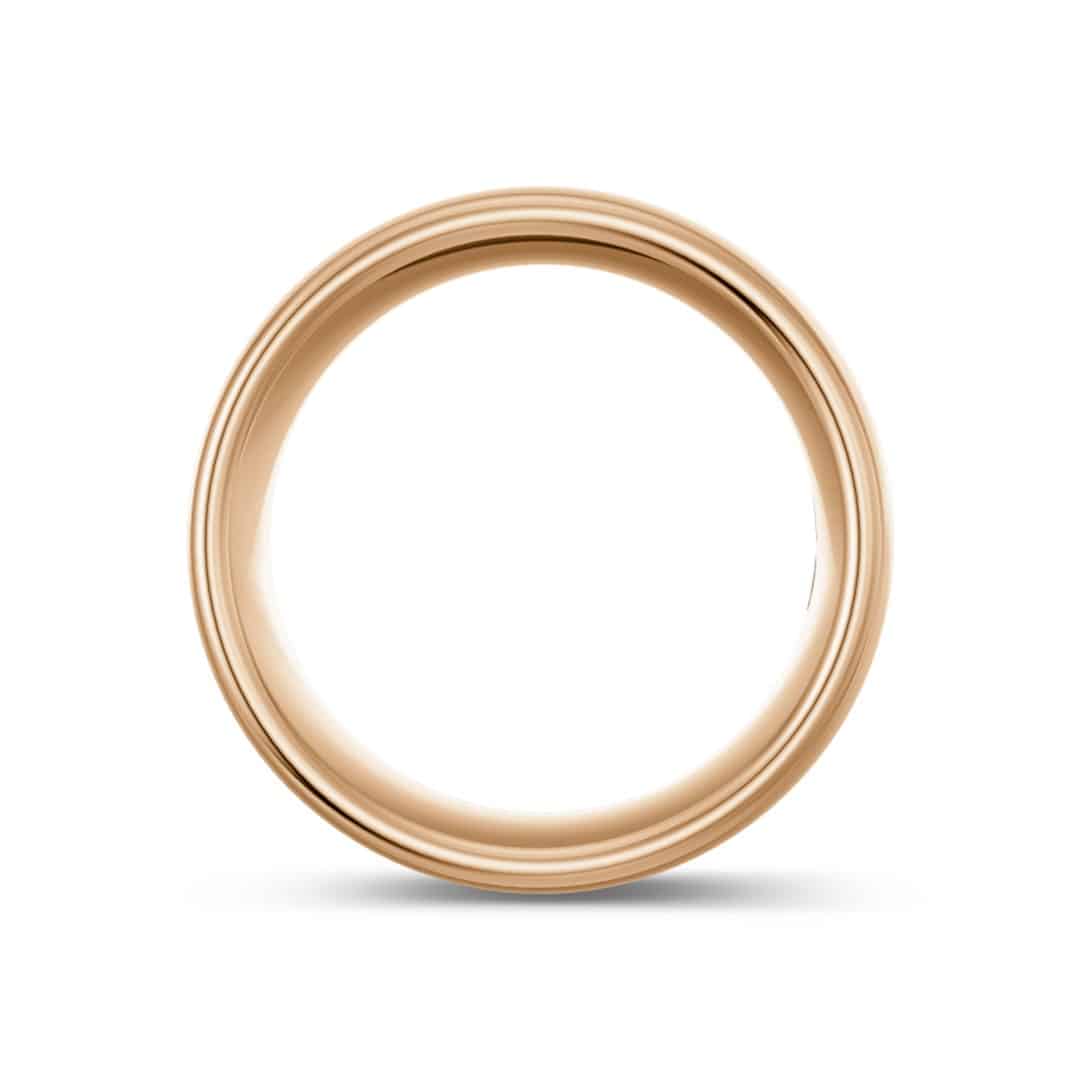
Warm, colorful shimmer
Red Gold
Red gold is characterized by its warm, copper-colored color and is therefore very popular. To achieve this shade, fine gold is mixed with silver and copper. A real eye-catcher. You will find the following grades in our range: 333 red gold (8 carats), 585 red gold (14 carats), 750 red gold (18 carats).
Design red gold rings now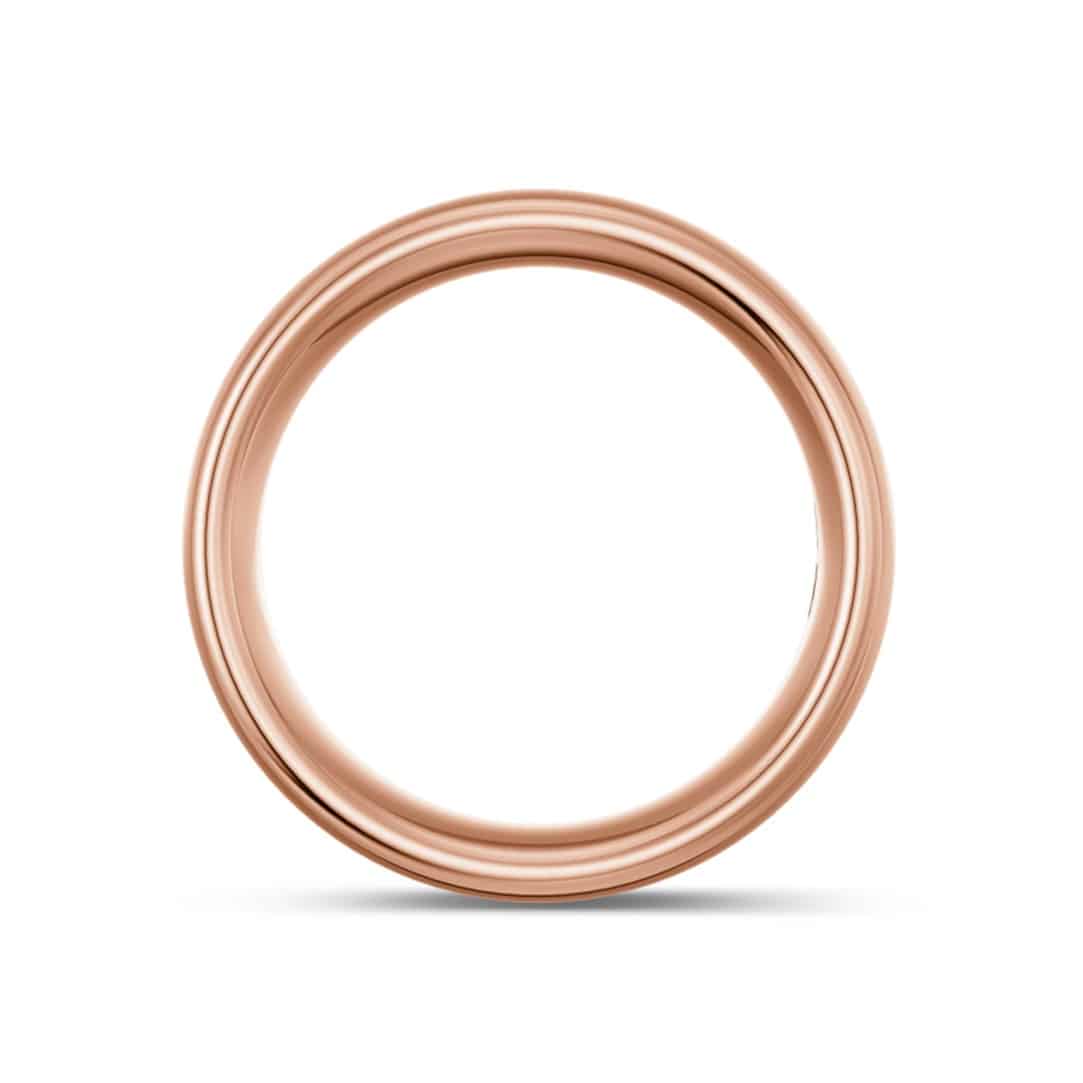
White Gold Variants
Silver to off-white luster
White Gold
The white gold alloys are characterized by a high proportion of palladium. Together with silver, the palladium removes the color from the fine gold, making it very noble. Depending on the proportion of “discolouring” substances, the resulting alloy can have a silver (333 WG) to off-white (750 WG) tone. A rhodium coating gives it a particularly bright shine. We offer you the following alloys to choose from: 333 white gold (8 carat), 585 white gold (14 carat), 750 white gold (18 carat).
Design white gold rings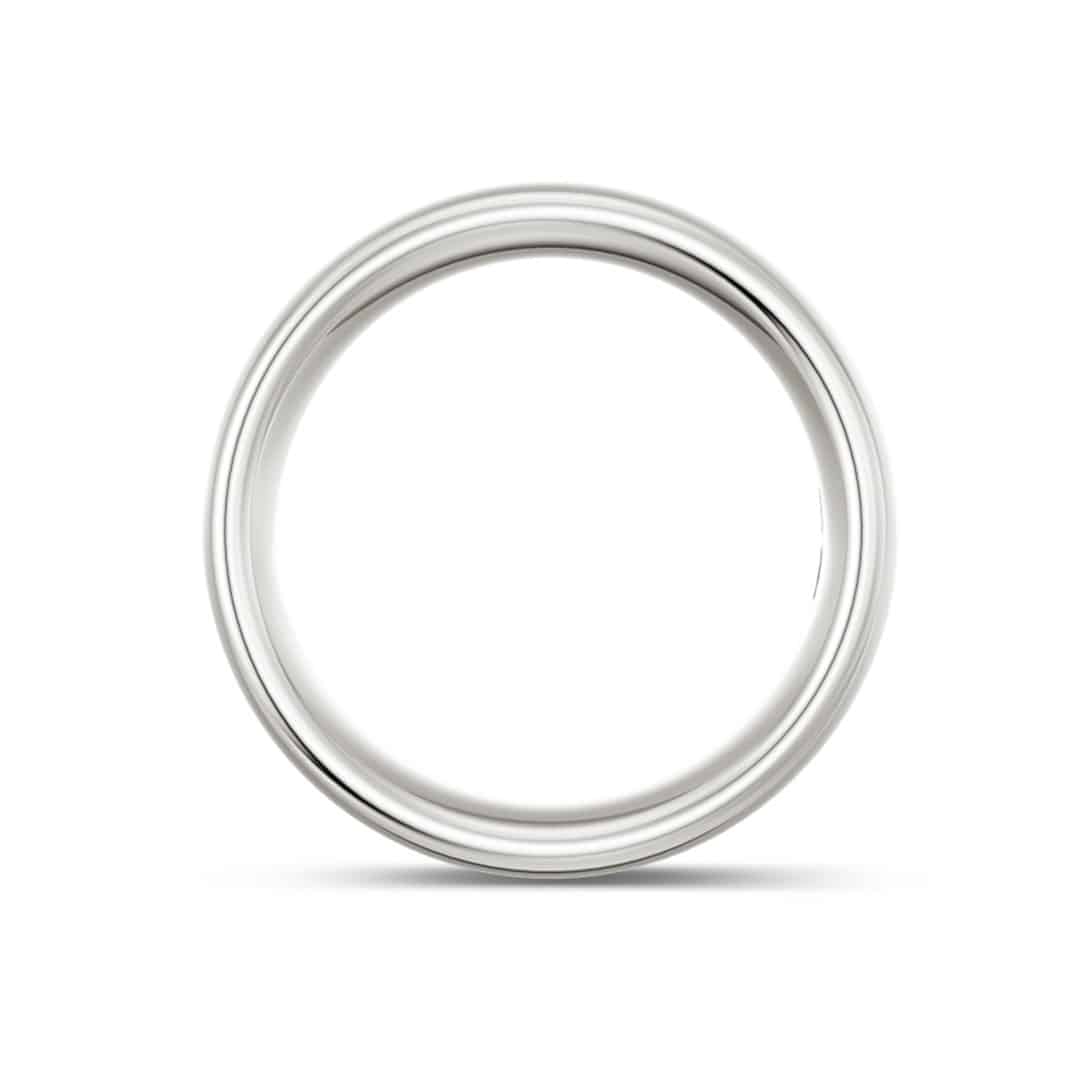
A special feature at amodoro
Dawnrose
A brownish rose-colored gold that shimmers fascinatingly differently in every light: sometimes the alloy shines warmly in a cinnamon-colored and reddish shade, then it appears pink-red and again in a different light it appears almost violet to clearly chestnut brown. This coloring is achieved through an alloy of gold, silver, palladium and copper. Dawnrose is available from us in the following alloy: 750 Dawnrose (18 carat).
Design dawnrose rings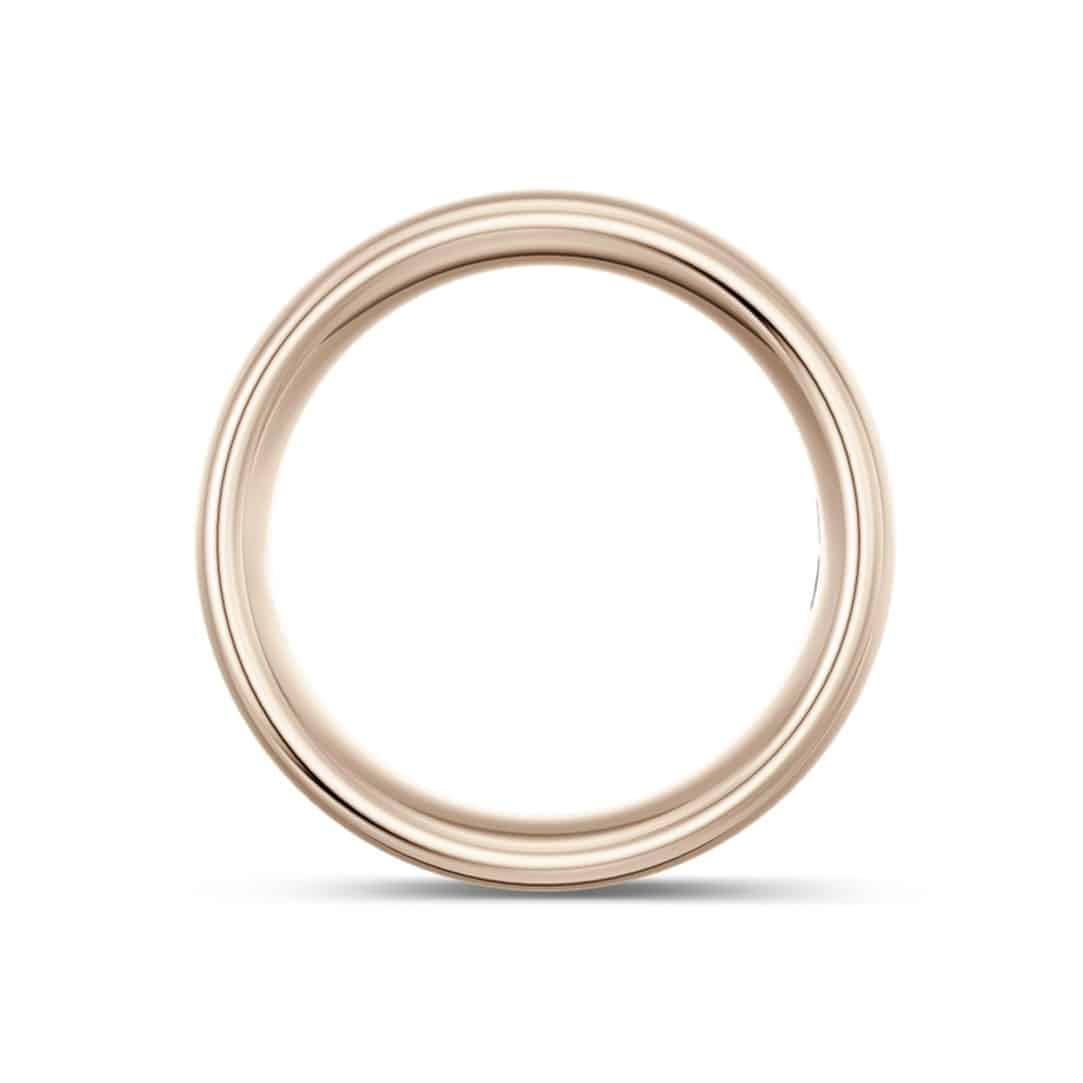
Platinum & Palladium
Noble and also very popular
Platinum
Wedding rings made of platinum are particularly noble and therefore very popular as a wedding ring material. Due to its stability, there are hardly any signs of wear and tear, even after wearing it for a long time. The precious metal has a mysterious white sheen that is rarely found in nature, making it very valuable. Almost half a ton of rock has to be dug from a depth of more than 1000m to get a single gram of platinum. Due to its almost perfect purity, it is particularly kind to the skin. It is very color and dimensionally stable and is characterized by its high resistance. We offer the following platinum alloys: 600 platinum, 950 platinum and also, the very precouis and fine PlatinGold with a fineness of 975. Find out more about PlatinGold here.
Design platinum rings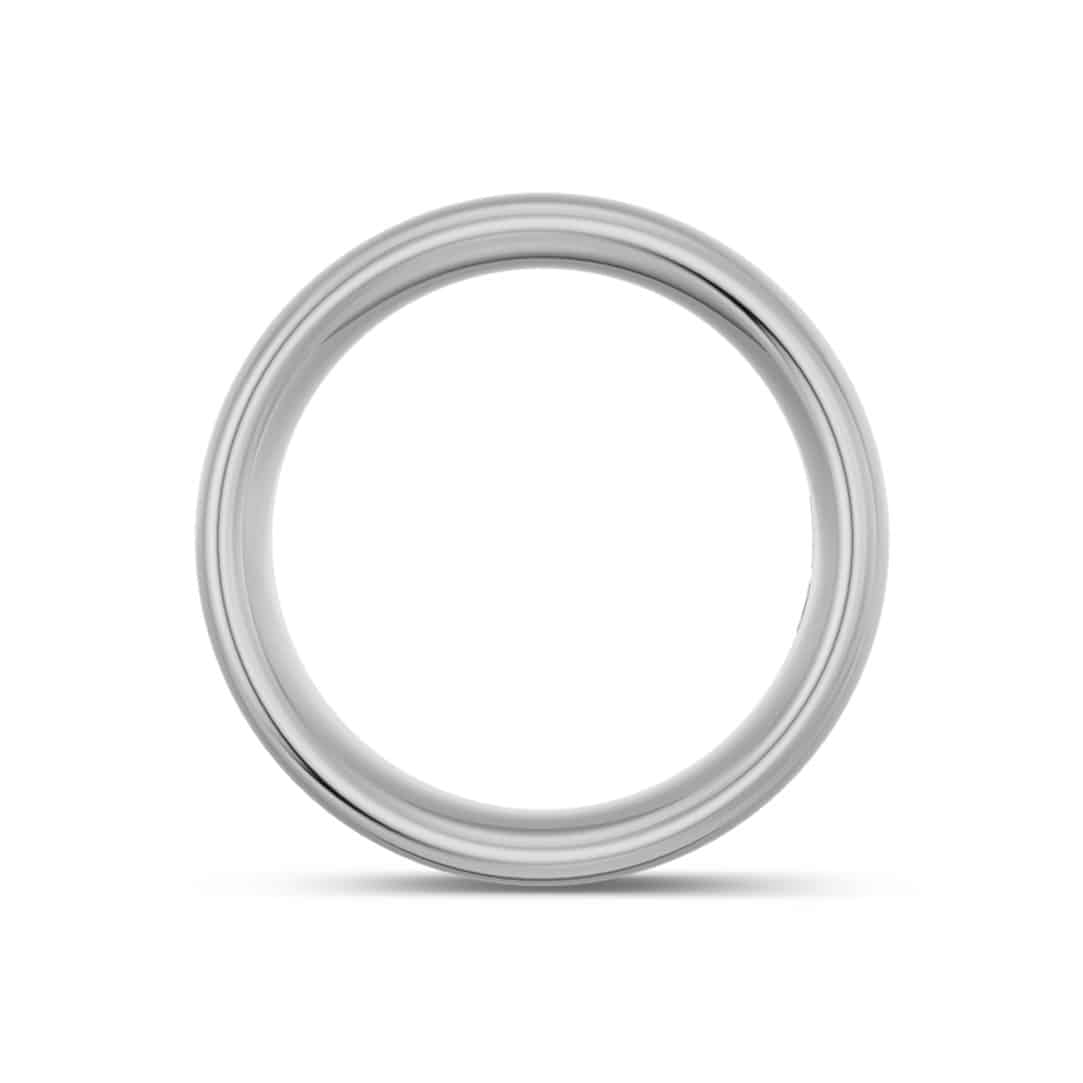
Rare and noble
Palladium
Alongside gold, silver and platinum, palladium is the fourth real precious metal. It was not discovered until 1803 and was named after the asteroid Pallas, which had just appeared. Belonging to the platinum group, the metal is naturally silver-grey. Platinum and palladium are very similar in terms of processing, hardness and durability, although palladium weighs noticeably less. You will find these palladium alloys in our range: 500 palladium, 950 palladium.
Discover palladium rings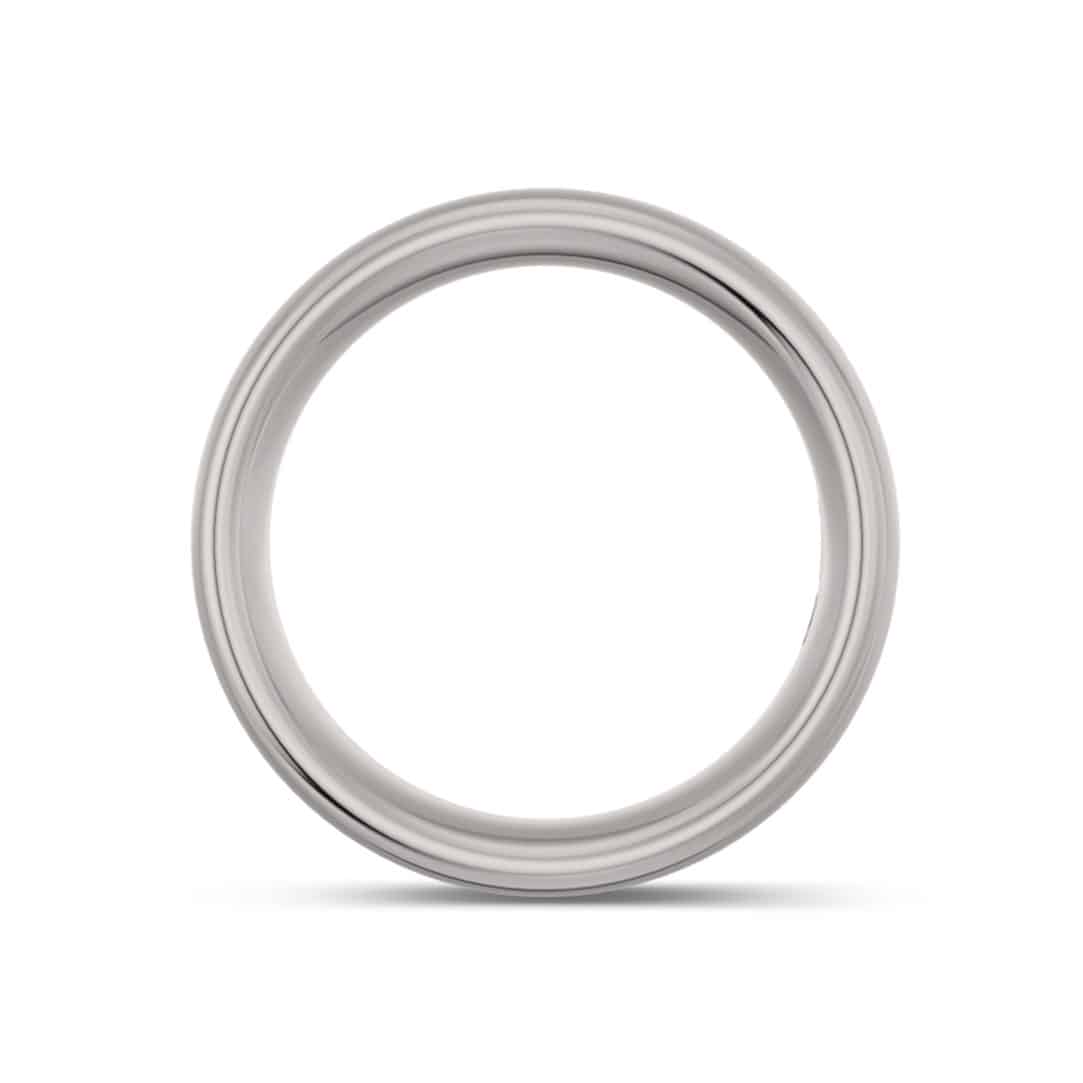
Other Possibilities
Classics for jewelry
Silver
The inexpensive material silver (Latin Argentum; chemical element Ag) has been very popular in jewelery and wedding ring production for centuries. It is very soft and easily deformable. Rings made of silver impress with their characteristic, white shine. We offer the following common silver alloy: 925 silver.
Discover silver rings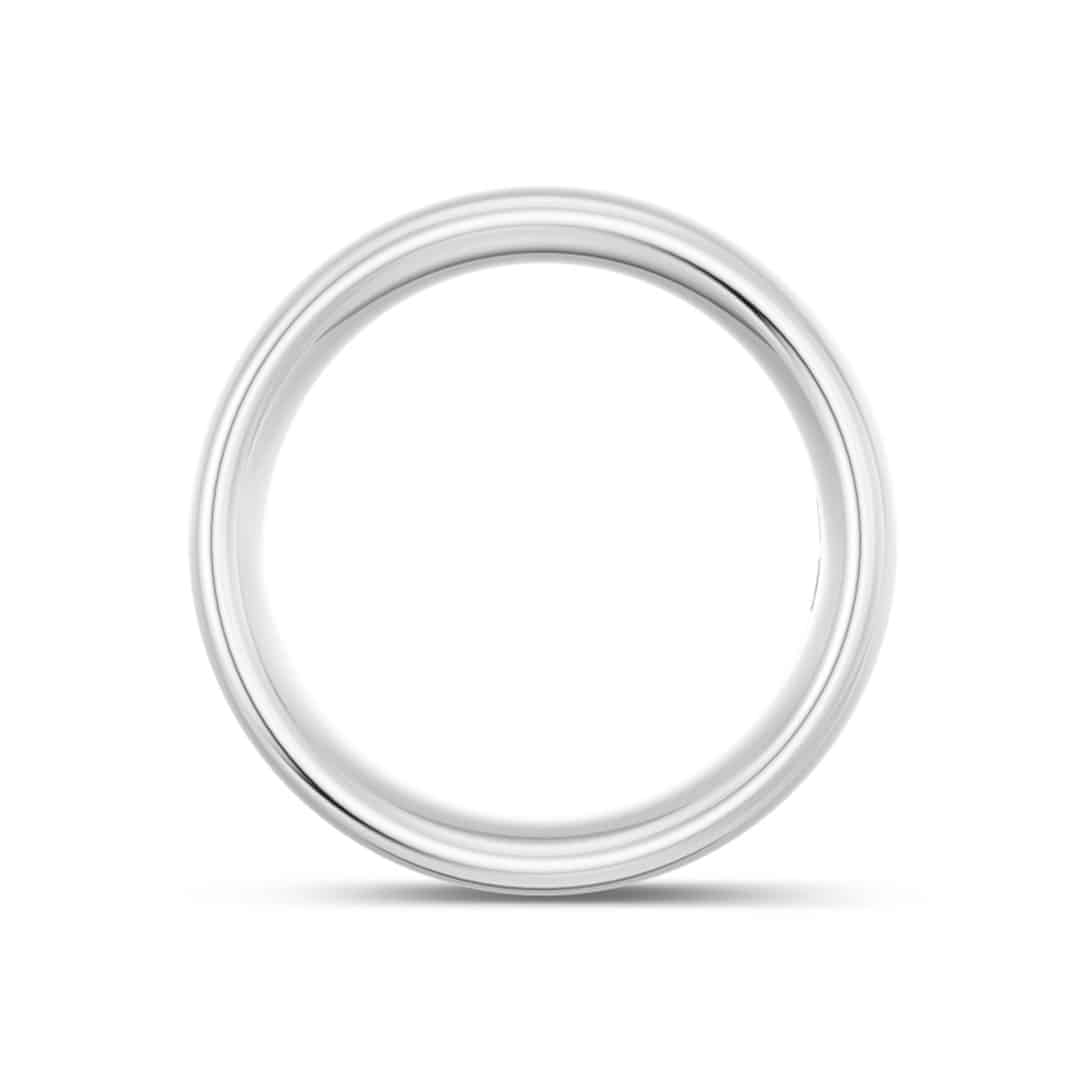
Very light and hard
Titanium
Titanium is a metal with a gray metallic luster that is very light, but also very hard and scratch-resistant. It is corrosion resistant and withstands extreme temperatures. In addition, titanium is particularly suitable for allergy sufferers. Not only used in space travel, but also at amodoro.
Design titanium rings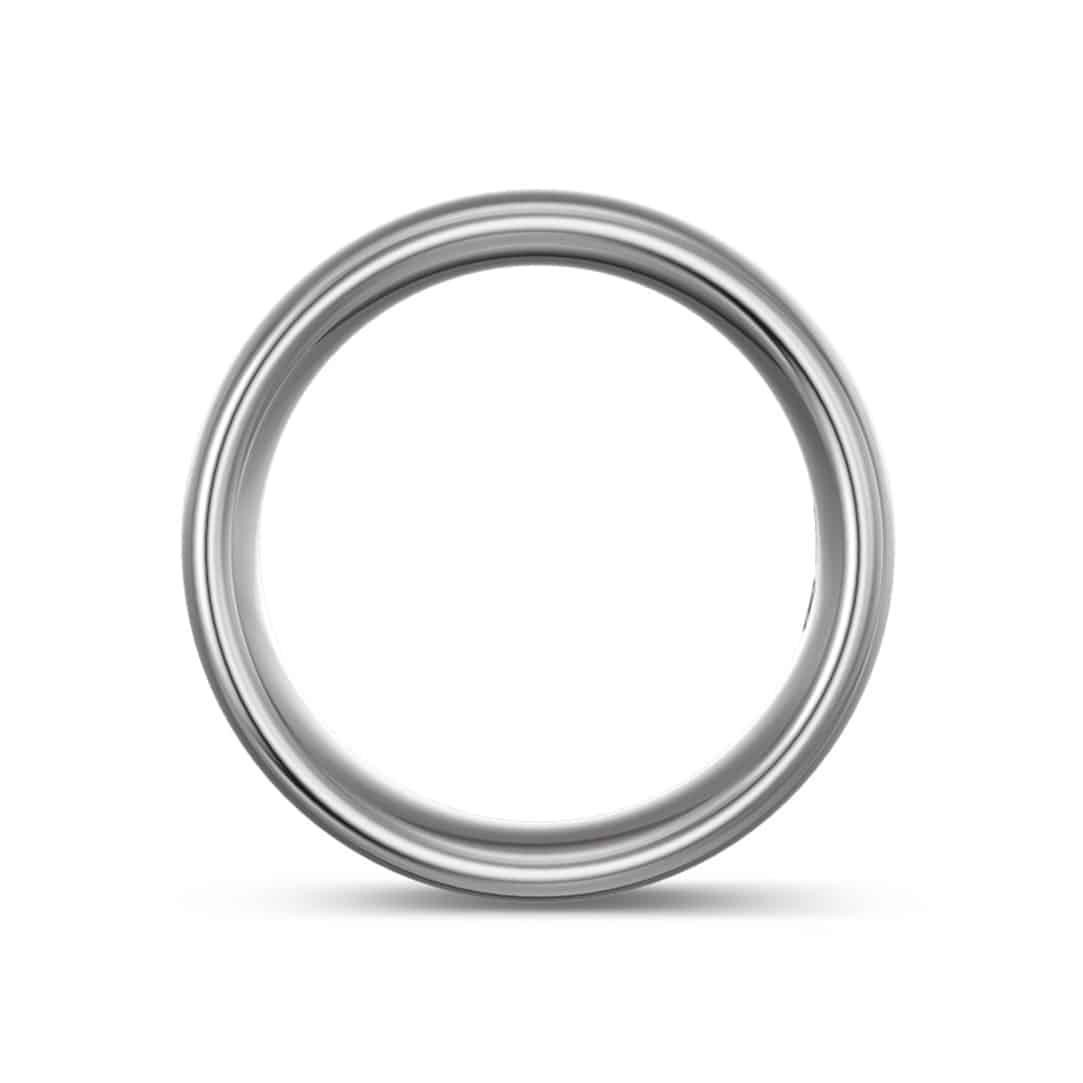
Robust and inexpensive
Stainless Steel
Stainless steel has a grey-silver color and is very popular. This material is also visually appealing, does not oxidize and is very easy to care for. Stainless steel is very robust, rust- and nickel-free and skin-friendly. An even greater advantage is its low price compared to precious metals. Rings made of stainless steel don’t need to shy away from visual comparisons with white gold or platinum.
Design steel rings now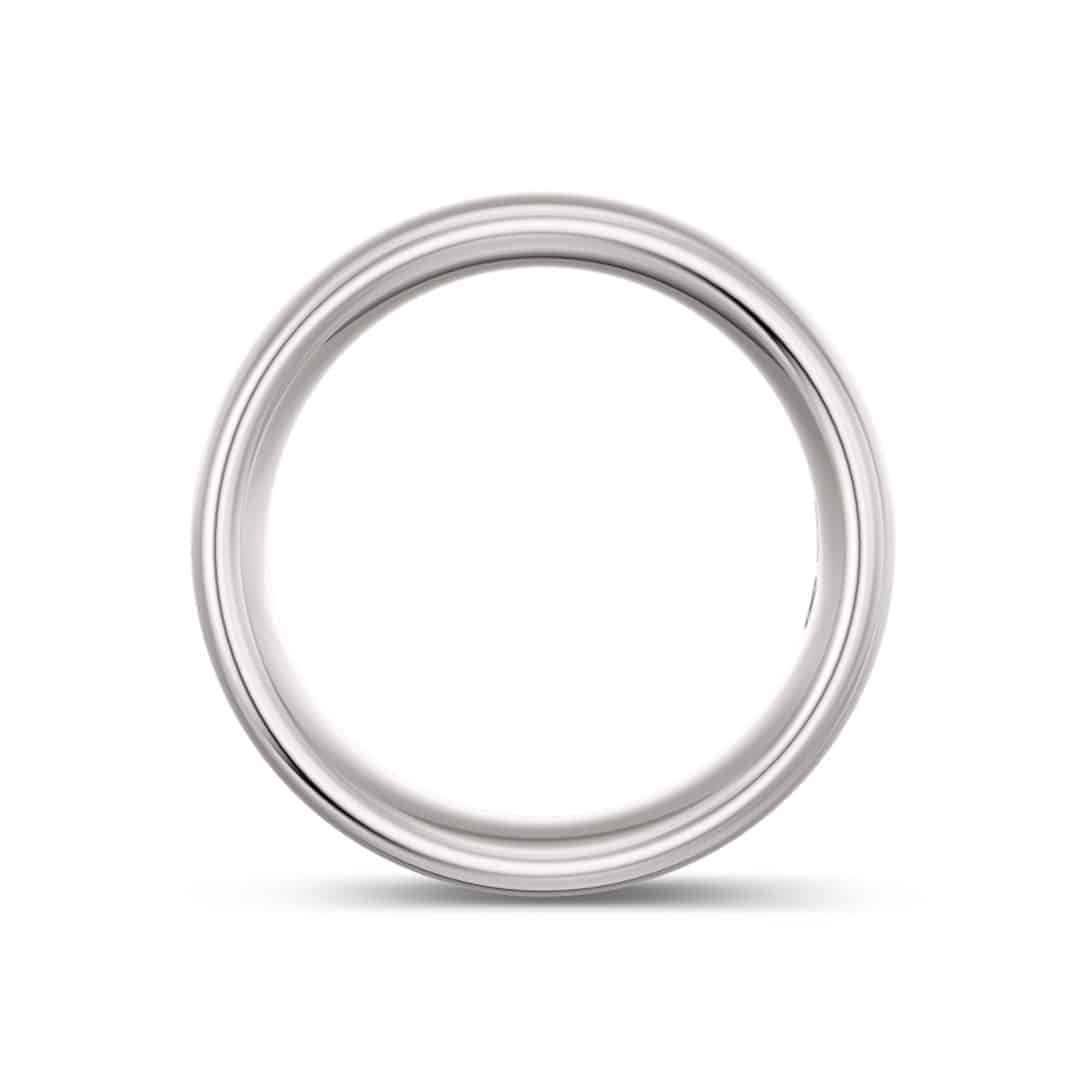
There is nothing like a real picture of the colors on your own skin
Colors look different in every light and create their own unique shimmer on every skin type. You wear nothing as long as your wedding ring. Choosing the right color of wedding rings is therefore associated with many emotions and we therefore always recommend taking the time to seek advice from local experts.
Our amodoro partners look forward to helping you! You can find a partner here:in near you.

